Bringing the Ghostly City of Pompeii Back to Life
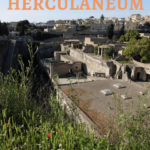
Visiting Herculaneum, a Roman city destroyed by the same volcano that engulfed Pompeii, is really rewarding. Here's how to visit Herculaneum, and why it should be as much of a priority on your trip to Italy as seeing Pompeii.
Over 3.5 million people visit the ancient Roman city of Pompeii every year. Buried by tonnes of volcanic ash and rocks when Mount Vesuvius erupted in AD79, it's one of the best-known tourist sites in Italy. But there's another Roman city just down the road from Pompeii that's even better preserved and that receives only a tenth of the visitors that go to Pompeii. That city is Herculaneum, and it's well worth a visit.
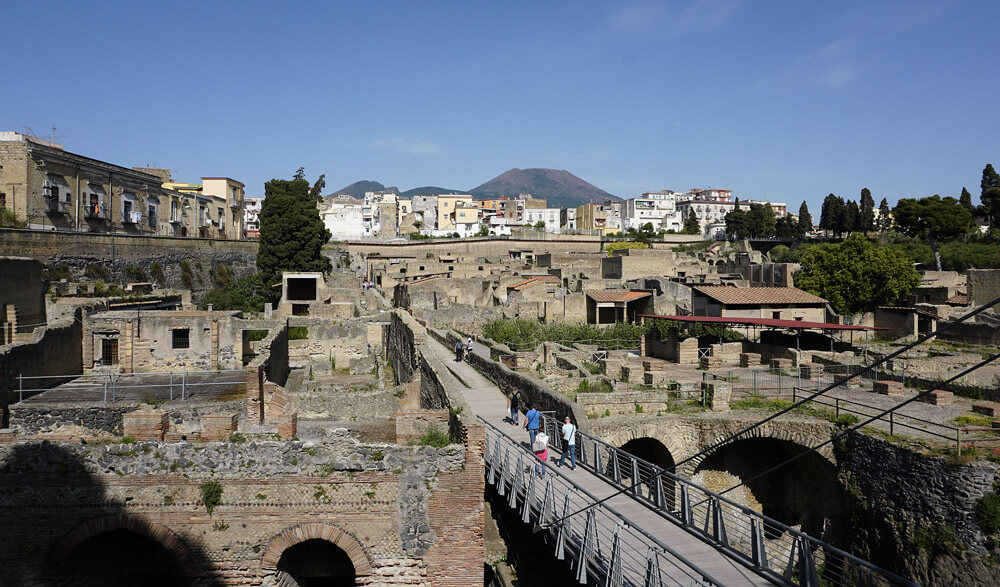
This post contains affiliate links – all this means is if you buy something as a result of clicking a link, I'll make a small commission that helps me run this site. There's no cost to you.
Update December 2021: The ruins at Herculaneum (known in Italian as Ercolano Scavi) reopened to visitors in April after being closed during Italy's early 2021 lockdown.
For the winter period (15 October until mid March 2022), the ruins at Herculaneum are open from 8.30am to 5pm, with the last admission at 3.30pm. Visitors must leave the archaeological area by 4.30pm.
Herculaneum is closed on Wednesdays throughout the year. It's also closed on January 1st (New Year's Day) and December 25th (Christmas Day).
You can buy tickets at the gate, but the number of visitors is being limited to 100 per 15 minutes to make sure everyone has enough space. To be certain of getting in, it may be wise to book your tickets online in advance.
From 6 August 2021, all visitors to Herculaneum aged 12 and above must show the Italian Green Pass to demonstrate either proof of full vaccination or a recent negative test. If you're not vaccinated, you can get a rapid test from pharmacies. When you visit Herculaneum in 2021 you'll have your temperature scanned at the entrance. You must wear a face covering during your visit and make sure you stay at least 1.5 metres apart from other visitors.
Where is Herculaneum?
Herculaneum, like Pompeii, was a Roman town on the coast of southern Italy, between modern-day Naples and Sorrento. You'll find the ruins in the modern town of Ercolano. The ancient town actually extends underneath the modern one – what's been excavated is probably only a small portion of what was covered when Vesuvius erupted.
Herculaneum lies on the opposite side of Mount Vesuvius to Pompeii, and although they shared the same fate when the volcano erupted, they were destroyed in different ways; Pompeii by a 25-metre thick shower of falling rocks, Herculaneum by a lethal 100mph, 250°C pyroclastic surge of hot gas and ash.
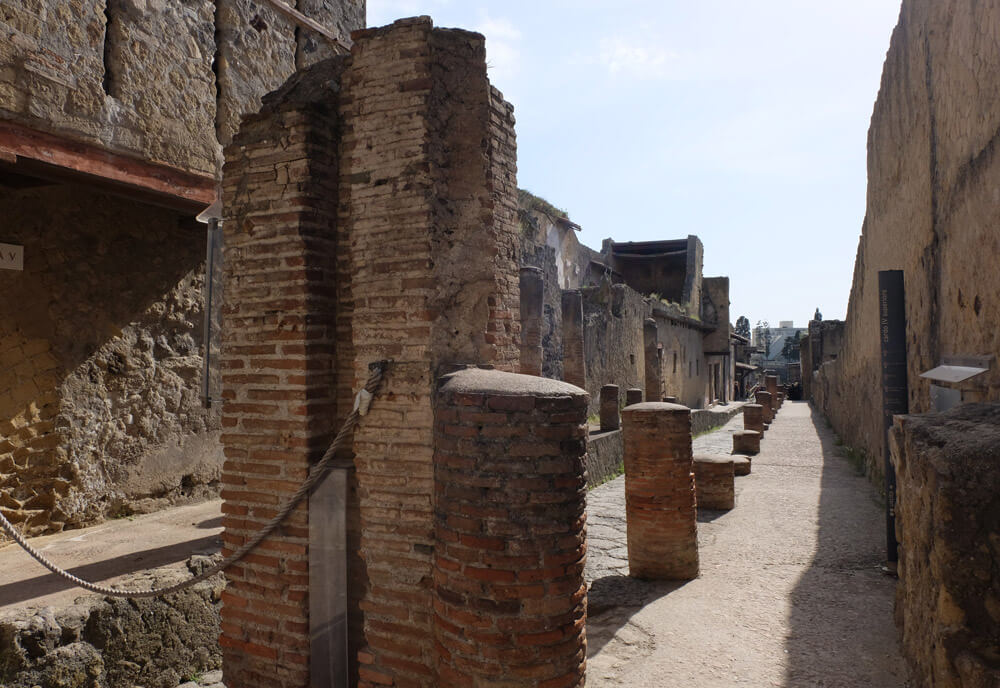
Why should I visit Herculaneum?
Herculaneum is really different to Pompeii
The main reason to visit Herculaneum is because it's so different to Pompeii. Don't miss out on going to Herculaneum because you think it's just a smaller version of Pompeii; it really isn't.
Herculaneum is much better preserved than Pompeii
There's a massive difference in the level of preservation at Herculaneum compared to Pompeii. When Mount Vesuvius erupted, the buildings in Pompeii were damaged by a deluge of falling rocks before being buried in lava and ash, meaning that very little survives above the ground floor, and virtually every building lost its roof.
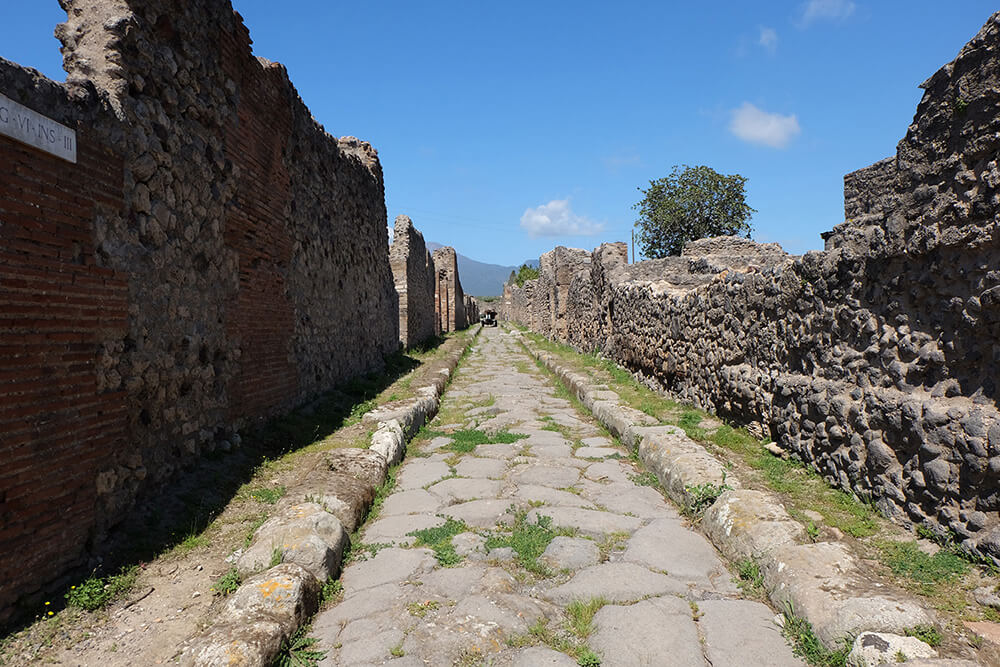
In Herculaneum, the town was buried almost instantly in hot ash. The buildings in Herculaneum are much better preserved than those in Pompeii; many of them have their upper floors still intact, and a couple even have their original wooden balcony. Unbelievably, some of the shops still have fittings. Herculaneum was also a wealthier town than Pompeii, so many of the buildings you'll see are more opulent and richly decorated. The mosaics and frescos are brighter, larger and more intricate here, a real treat for the eyes.
While you definitely can imagine yourself living in Pompeii as you walk its Roman streets, in Herculaneum the effect is really powerful. If you close your eyes, you can almost hear and sense the Roman life going on around you – it's truly like a living museum.
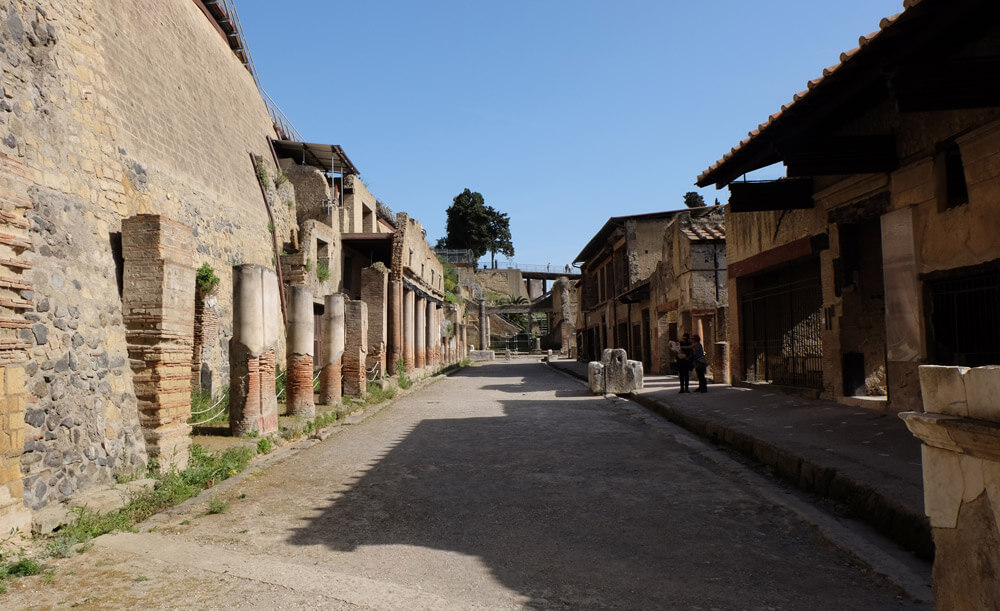
The fact that Herculaneum is better-preserved means that it's much easier to make sense of how it worked as a town. In Pompeii it's essential to take a guided tour to understand what you're looking at; signs are few and far between and the grid layout makes it easy to get lost. The excavated part of Herculaneum is far smaller than Pompeii, and each street has its own landmarks. The information signs and directions at Herculaneum are much better as well, and if you've taken a guided tour of Pompeii, there'll be plenty that you'll recognise from the other site.
Herculaneum is much smaller and quieter than Pompeii
Herculaneum gets around 300,000 visits a year compared to Pompeii's 3.5 million, and while it is a much smaller site, the lower number of visitors gives it quite a tranquil feel. You won't experience crowds at Herculaneum, or queues to see the most famous sights.
The sheer volume of hot ash which rained down on Herculaneum means that the modern town of Ercolano is at a much higher level than the ancient one, and as you walk down the long ramp into the ruins you're surrounded by wild flowers and birdsong. It's like stepping into another world.
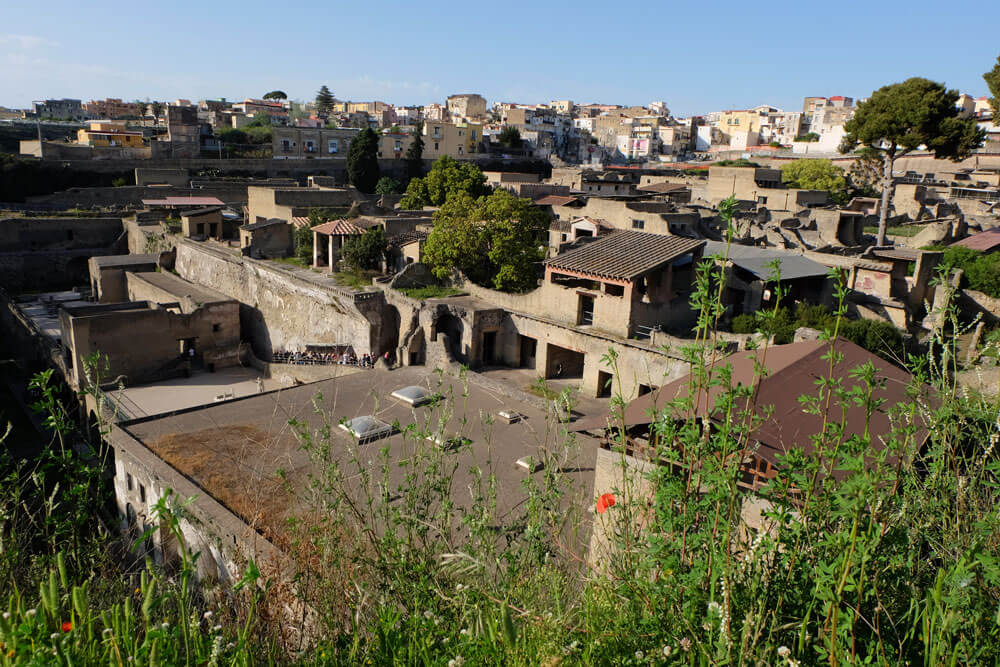
That tranquil feel, and the sense that the inhabitants have only just left, makes their deaths even more horrific. After you've seen the buildings where they lived, worked and socialised, you'll reach the place where many of them died. As you round the corner to the ancient beach (the eruption pushed the seafront 500m further out to sea) you'll see the boathouses, and inside them, hundreds of skeletons. As these people sheltered in hope of being rescued by boat, an intense wave of hot gas hit the town, killing them instantly, vaporising their flesh and leaving only their charred bones.
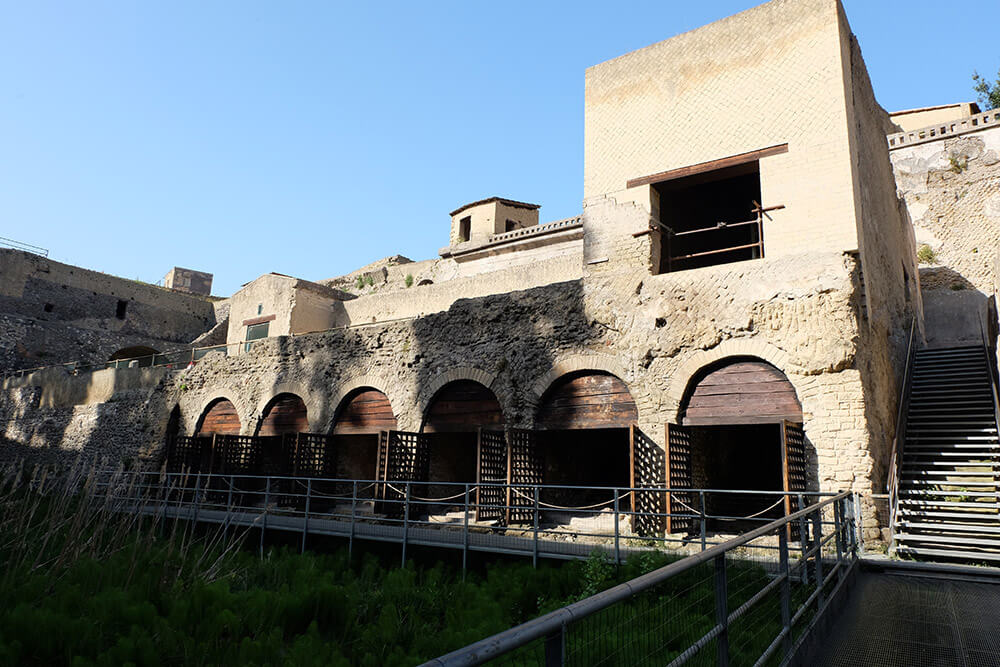
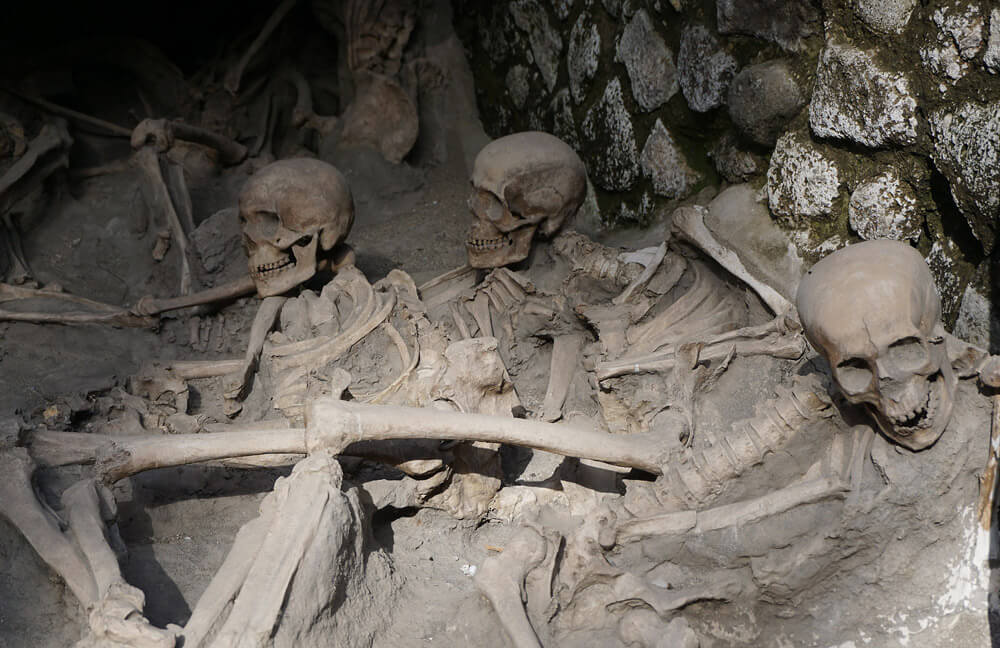
Which is better, Herculaneum or Pompeii?
It's really difficult to choose between Herculaneum and Pompeii. If you're interested in Roman history and what happened when Mount Vesuvius erupted, it'd be a real shame not to visit its most famous sight, Pompeii. Having said that, many people do prefer Herculaneum to Pompeii for its lack of crowds, stunning preservation and being able to see more sights in a shorter space of time with less walking.
If you're determined to visit Pompeii, visiting Herculaneum as well adds a lot of extra richness to your trip. It'll give you a better understanding of what the buildings you saw in Pompeii would have looked like when they were complete, and a better feel for what the inhabitants' lives were like. The extra level of preservation at Herculaneum is absolutely amazing, and because it's so close to Pompeii and so much smaller, it's not too much extra effort to visit both. I do recommend visiting Pompeii before Herculaneum and taking a guided tour as it'll help you understand both sites better.
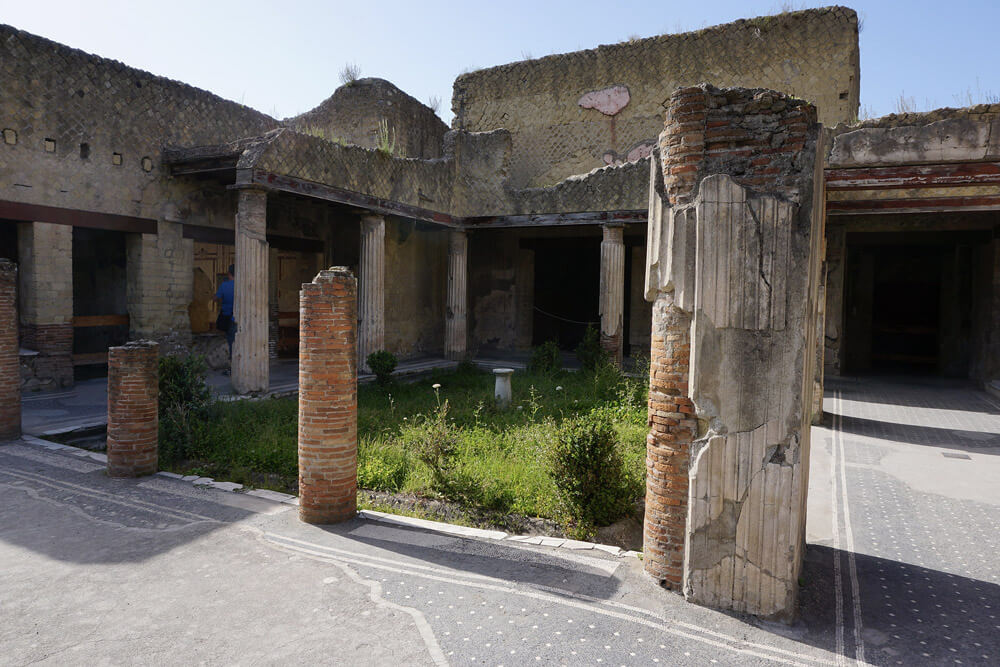
Can you do Pompeii and Herculaneum in one day?
It's possible, but trying to visit both Pompeii and Herculaneum in one day would be exhausting. Pompeii is an enormous archaeological site, and visiting it is a lot like visiting a modern city, with the key sights spread out across the whole area. It's definitely not a good idea to try and visit Herculaneum and Pompeii as a day trip from Rome – with the travel it's just too much.
I also found visiting the two Roman cities where so many people died quite emotional; the casts of the bodies at Pompeii are really tragic, while the skeletons at Herculaneum are actually rather horrifying. I think visiting Herculaneum and Pompeii on the same day might be quite emotionally, as well as physically tiring.
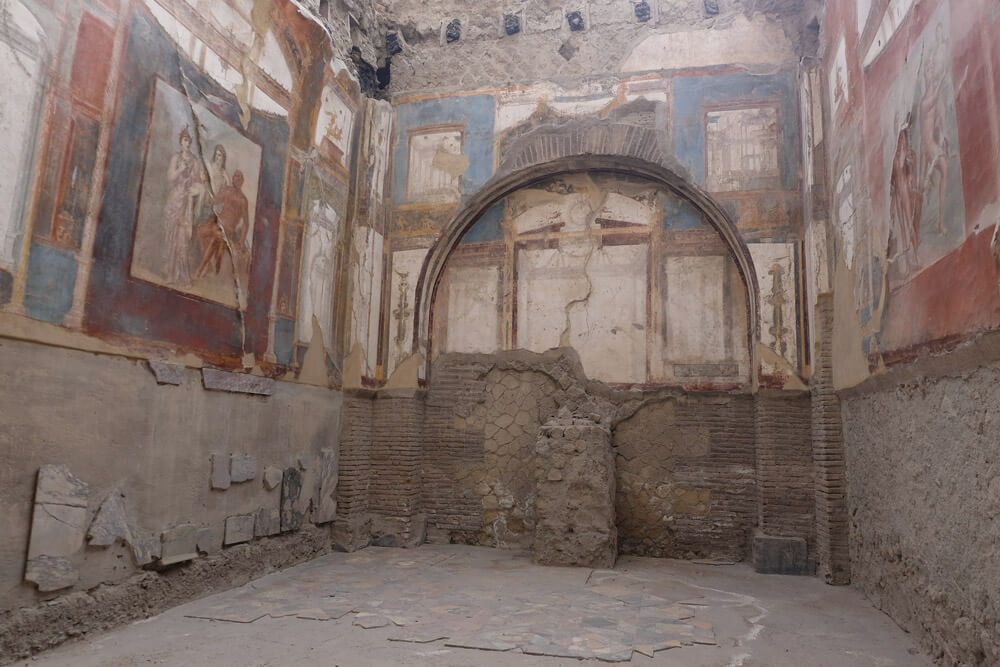
My recommended option for visiting Pompeii and Herculaneum is to first spend one full day at Pompeii, taking one of the official guided tours, then spend another day visiting Herculaneum and the crater at the top of Vesuvius. Visiting Herculaneum takes between two hours and half a day, giving you plenty of time to climb Vesuvius.
Climbing Vesuvius is really easy from Ercolano (modern Herculaneum). Vesuvio Express buses leave from outside Ercolano train station (the same station that you'll use to get the Circumvesuviana train to and from Naples and Sorrento) and take you up to the car park nearest the crater. The buses depart at regular intervals, and give you around 90 minutes at the volcano – enough time to walk up to the crater, take a look around, and walk down again. A round trip ticket is 10 euro per person.
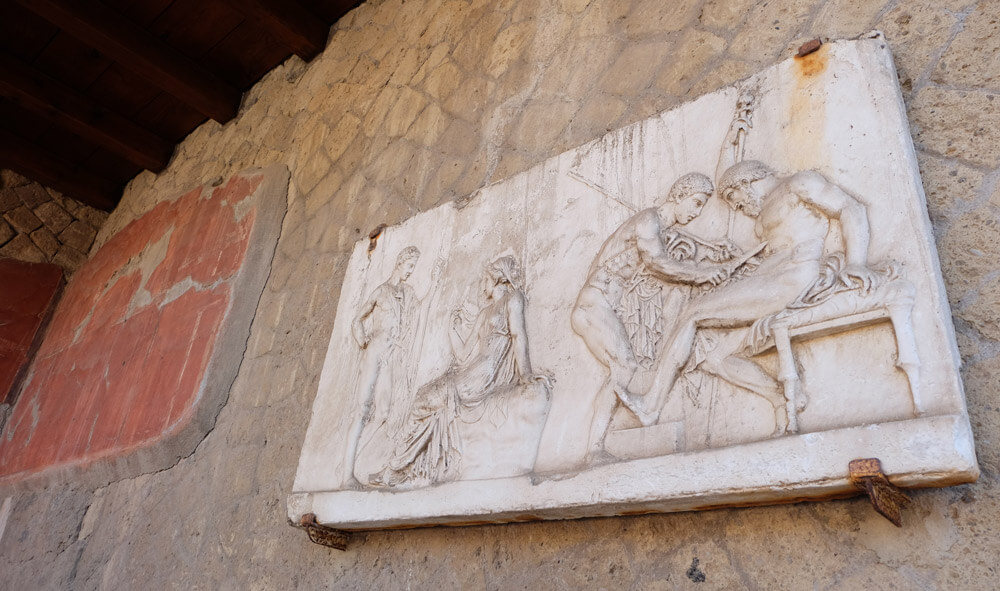
Other interesting sights in Ercolano
Away from the main excavated site at Herculaneum, there are a couple of other interesting things to see when you go to Ercolano.
The MAV Virtual Archaeology Museum uses technology to bring the Roman cities of Pompeii and Herculaneum back to life. Through a series of interactive exhibits you can experience Roman life as it was just before the eruption. It's an interesting way to get a different perspective on the ruins.
The Theatre of Herculaneum was the first trace of ancient Herculaneum to be rediscovered. In 1710, a man named Ambrogio Nocerino was digging a well and came across a 2,500-seat Roman theatre by accident. His find led to work starting on the excavations that we see today, but the theatre he found is still 20 metres underground, covered by the volcanic ash and accessible only by tunnels. It's one of the best-preserved Roman theatres anywhere in the world.
Unfortunately, steep, dark tunnels and fragile historic buildings aren't a great combination for a tourist attraction so it's closed to the public. You can see an entrance on Corso Resina, and you can also see the modern buildings which cover the site. It's an eerie feeling to imagine what else might be underneath your feet.
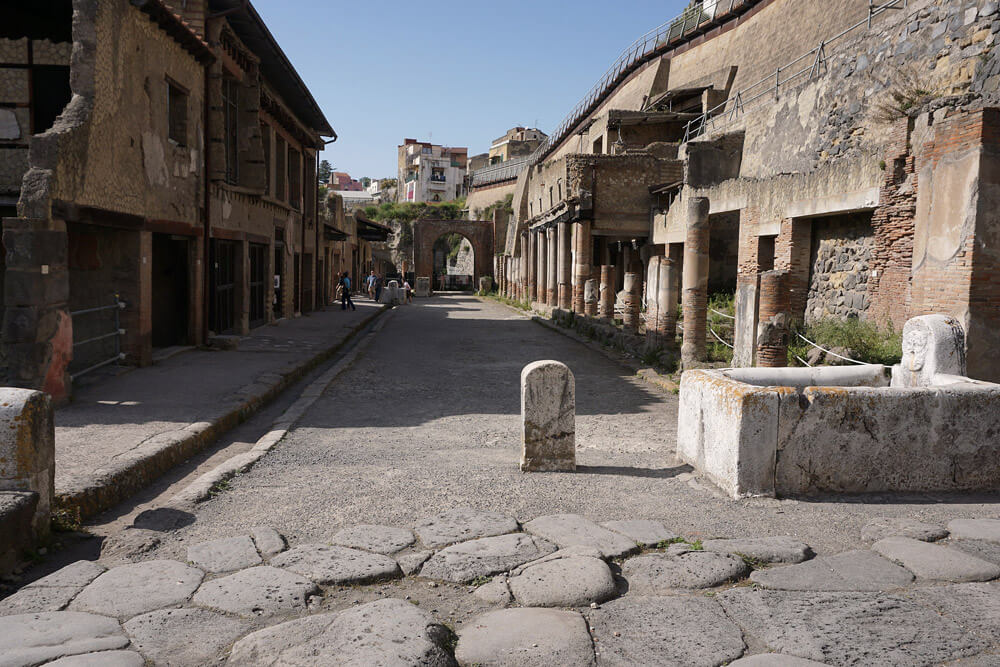
Practical advice for visiting Herculaneum
How to buy tickets for the Herculaneum ruins
Herculaneum is quieter than Pompeii and there's usually no need to book tickets in advance. However since the authorities are limiting access to the site in 2021, it might be wise to make sure you get in by booking your tickets in advance at the official ticket sellers Ticketone.
If you're planning to go to Pompeii and Vesuvius as well as visiting Herculaneum, you can buy the Campania Artecard which will get you into both sites (plus a number of other sightseeing spots in the area) over the course of your visit.
Herculaneum opening hours
The Herculaneum ruins are open 09:30 – 19:30 in the summer (16 March to 14 October) and until 17:00 in winter (15 October to 15 March). The last admission is at 18:00 in summer and 15:30 in winter.
The ruins are usually open 363 days of the year. They are closed on Christmas Day (25 December) and New Year's Day (1 January). However please note that in 2021 Herculaneum is closed on Wednesdays.
Tickets for adults cost €13.00. It's normally free to visit Herculaneum on the first Sunday of the month from October to March but this programme is closed at the moment.
Please check these timings before your visit on the Herculaneum official website.
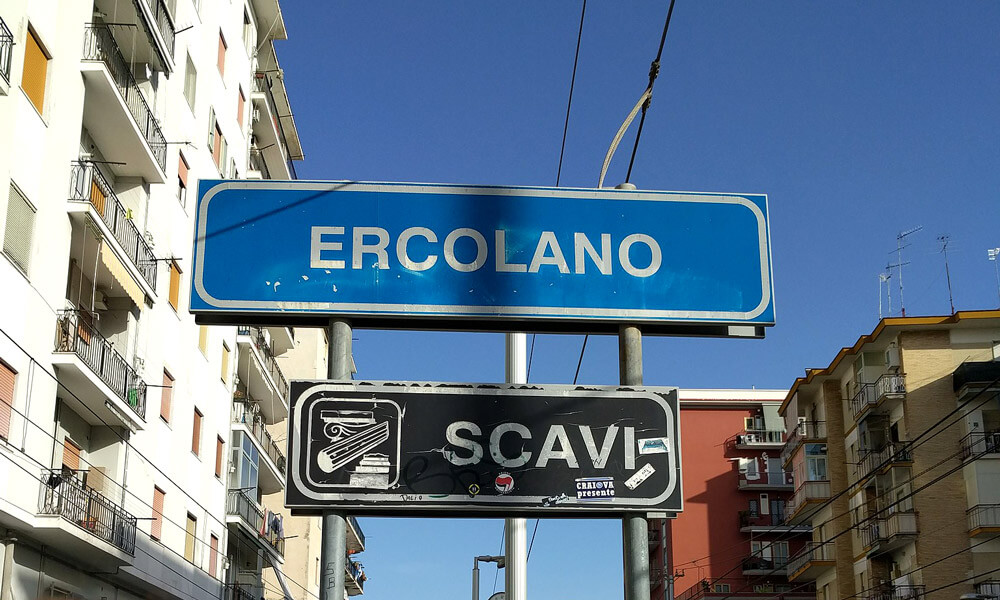
How to get to Herculaneum from Naples
The easiest way to visit Herculaneum from Naples is by taking the Circumvesuviana train from Napoli Centrale (Piazza Garibaldi) to Ercolano. The trains are a bit scruffy and get very crowded but run regularly. The Naples to Herculaneum train will take around 25 minutes.
To maximise your chances of getting a seat, try getting on at Porta Nolana station, one stop before Napoli Centrale. Get off at Ercolano Scavi station and walk straight down the hill towards the ruins. The walk from the station to the Herculaneum ticket office takes around 10 minutes.
Visiting Herculaneum from Sorrento
The journey from Sorrento to Herculaneum is another really easy trip on the Circumvesuviana train. Get on the train at the station in the centre of Sorrento and get off at Ercolano Scavi. The train from Sorrento to Ercolano takes around 40 minutes; at peak times there's a train every 15 minutes.
When you get off the train, walk down Via IV Novembre towards the sea – the route to the Herculaneum ruins is reasonably well-signposted so you can't go wrong. There are a number of shops, cafes and restaurants on this street as well so it's easy to stop for a drink or something to eat either before or after your visit.
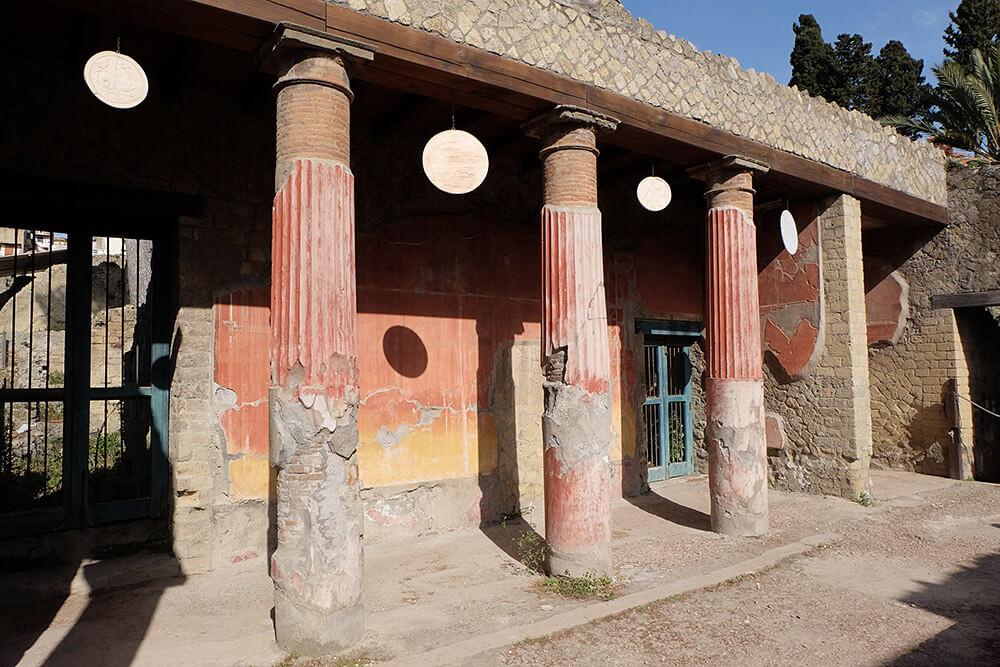
Can I take a tour of Herculaneum?
Guided tours are available at Herculaneum, but if you've done a tour at Pompeii and perhaps done some reading before your visit, I don't think it's essential – remember to pick up a paper map at the entrance though. Part of the reason for taking a guided tour at Pompeii is simply because of the scale of the site – there's a really good chance that you'd get lost there without a guide!
At Herculaneum, the site is far smaller and the signage and explanations are also much better. If you want a tour but you haven't booked in advance, you can get an audioguide from the ticket office at the entrance.
Facilities at the Herculaneum ruins
The ticket office at the entrance includes a small museum, toilets, luggage storage and a bookshop. There's also a vending machine for food and drink near the entrance. There's no restaurant or cafe on site.
If you're driving to Herculaneum there's no official parking for the site but there are public car parks nearby.
Large bags (bigger than 35 x 30 x 15 cm) need to be left at the entrance but luggage storage is free.
Where to stay when you visit Herculaneum
The best places to stay when you visit Herculaneum and Pompeii are Naples or Sorrento. Modern Ercolano and Pompei might be geographically closer, but they're both working towns, and apart from the ruins there's not much else to do for visitors.
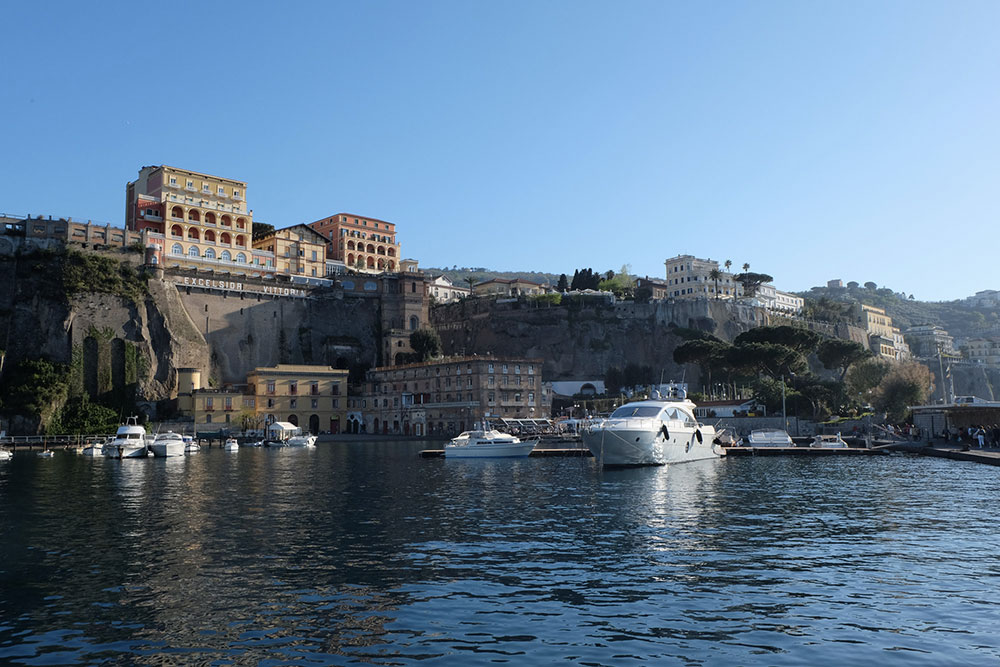
If you're touring Italy and are short on time, stay in Naples. Naples has super-fast train services to Rome and other cities in Italy, and it also has an international airport. Naples definitely has a gritty reputation, but for convenience to get to and from Herculaneum and Pompeii, it can't be beaten.
If you're looking to build a relaxing vacation around your trip to Pompeii and Herculaneum, I'd recommend staying in Sorrento. Sorrento is at the end of the Circumvesuviana train line from Naples, which also stops at Pompeii and Herculaneum, making getting to both Roman sites really easy.
There are loads of things to do in Sorrento; it's a gorgeous town in its own right, and it's particularly well-placed for day trips to Capri, Ischia, Procida and the Amalfi coast. Sorrento is also very welcoming for tourists, with a wide range of hotels, restaurants and bars, making it an easy, as well as scenic, option after long days spent exploring the Roman cities.
Would you visit Herculaneum?
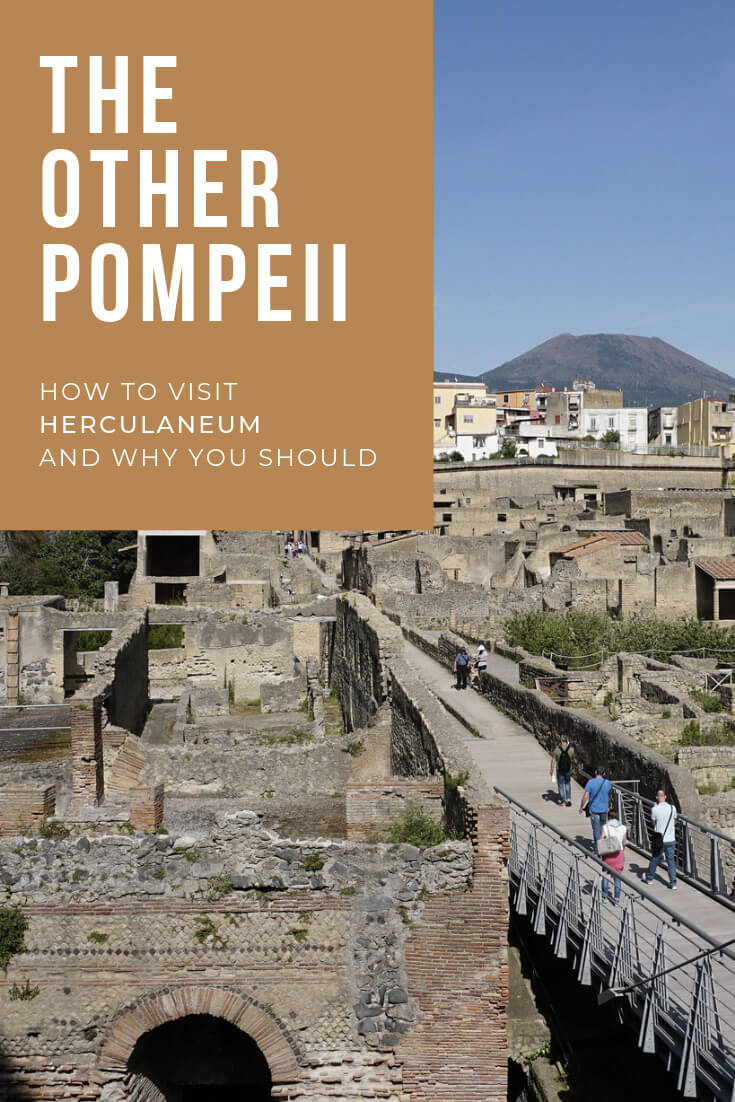
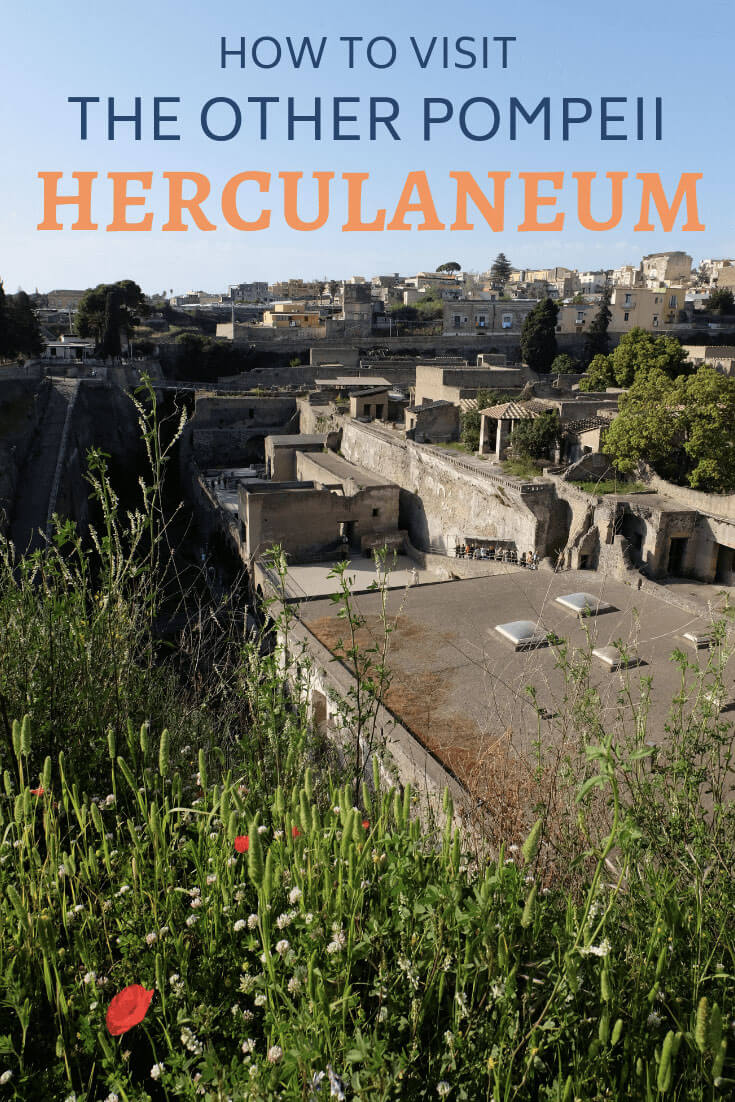
Bringing the Ghostly City of Pompeii Back to Life
Source: https://www.helenonherholidays.com/visit-herculaneum/
0 Response to "Bringing the Ghostly City of Pompeii Back to Life"
Post a Comment